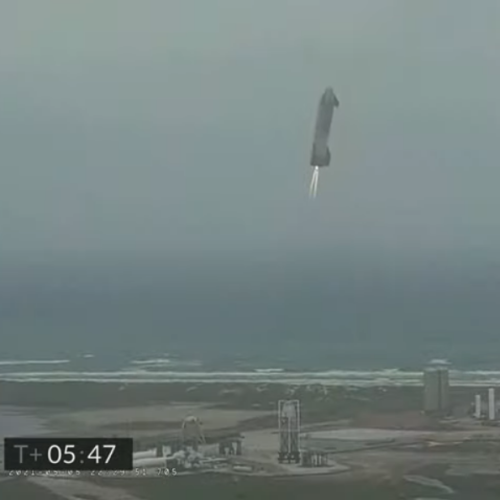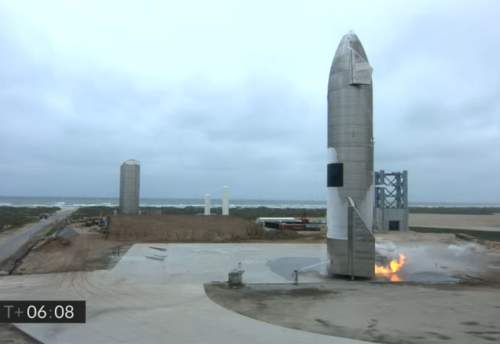NASA: Commercial demand exceeds supply at ISS
Capitalism in space: According to NASA officials, the number of private commercial tourist flights being proposed exceeds the availability of docking ports at ISS.
“We are seeing a lot of interest in private astronaut missions, even outside of Axiom,” said Angela Hart, manager of commercial low Earth orbit development at NASA’s Johnson Space Center. “At this point, the demand exceeds what we actually believe the opportunities on station will be.”
Opportunities for private astronaut missions are limited by what NASA calls the “traffic model” for the ISS, or the schedule of vehicles arriving and departing the station. Commercial crew missions are limited to two docking ports on the station, one of which is occupied by the vehicle that transported the current long-duration crew on the station. The other is used by commercial crew vehicles during crew handovers, cargo Dragon missions and private astronaut missions.
That restricts the opportunities for private astronaut missions. “About two is about all you fit in there with the rest of the traffic,” Dana Weigel, deputy manager of the ISS program at JSC, said.
The solution should be obvious to all. Private launch companies that wish to use ISS have to launch either their own docking ports, or their own modules with docking ports. This is Axiom’s plan, with its own module scheduled to arrive sometime in ’24. A secondary solution would be for private companies to launch their own space stations, independent of ISS. This would not only sidestep the problem of the bottleneck at ISS, it would free such a company from the charges NASA imposes for using ISS.
Meanwhile, it appears that Axiom is countering those new NASA’s charges for its ISS flights. From the article:
Thanks to an exchange of services between NASA and Axiom, it will actually be NASA paying Axiom for the Ax-1 mission. While Axiom is acquiring services such as crew supplies and on-orbit resources, NASA will be purchasing “cold stowage” space on the Crew Dragon spacecraft to return cargo to Earth at the end of the mission. NASA will pay Axiom $1.69 million for the mission, although Hart noted there will be other charges to Axiom for training and launch services, some of which are still being negotiated.
Suffredini said that, on later missions, Axiom will seek to reduce its reliance on NASA services. “We have a goal that, by after our third flight, we will provide all of those kinds of capabilities” that it is currently purchasing from NASA.
I wonder if that third flight will occur after the launch of Axiom’s module.
Capitalism in space: According to NASA officials, the number of private commercial tourist flights being proposed exceeds the availability of docking ports at ISS.
“We are seeing a lot of interest in private astronaut missions, even outside of Axiom,” said Angela Hart, manager of commercial low Earth orbit development at NASA’s Johnson Space Center. “At this point, the demand exceeds what we actually believe the opportunities on station will be.”
Opportunities for private astronaut missions are limited by what NASA calls the “traffic model” for the ISS, or the schedule of vehicles arriving and departing the station. Commercial crew missions are limited to two docking ports on the station, one of which is occupied by the vehicle that transported the current long-duration crew on the station. The other is used by commercial crew vehicles during crew handovers, cargo Dragon missions and private astronaut missions.
That restricts the opportunities for private astronaut missions. “About two is about all you fit in there with the rest of the traffic,” Dana Weigel, deputy manager of the ISS program at JSC, said.
The solution should be obvious to all. Private launch companies that wish to use ISS have to launch either their own docking ports, or their own modules with docking ports. This is Axiom’s plan, with its own module scheduled to arrive sometime in ’24. A secondary solution would be for private companies to launch their own space stations, independent of ISS. This would not only sidestep the problem of the bottleneck at ISS, it would free such a company from the charges NASA imposes for using ISS.
Meanwhile, it appears that Axiom is countering those new NASA’s charges for its ISS flights. From the article:
Thanks to an exchange of services between NASA and Axiom, it will actually be NASA paying Axiom for the Ax-1 mission. While Axiom is acquiring services such as crew supplies and on-orbit resources, NASA will be purchasing “cold stowage” space on the Crew Dragon spacecraft to return cargo to Earth at the end of the mission. NASA will pay Axiom $1.69 million for the mission, although Hart noted there will be other charges to Axiom for training and launch services, some of which are still being negotiated.
Suffredini said that, on later missions, Axiom will seek to reduce its reliance on NASA services. “We have a goal that, by after our third flight, we will provide all of those kinds of capabilities” that it is currently purchasing from NASA.
I wonder if that third flight will occur after the launch of Axiom’s module.




